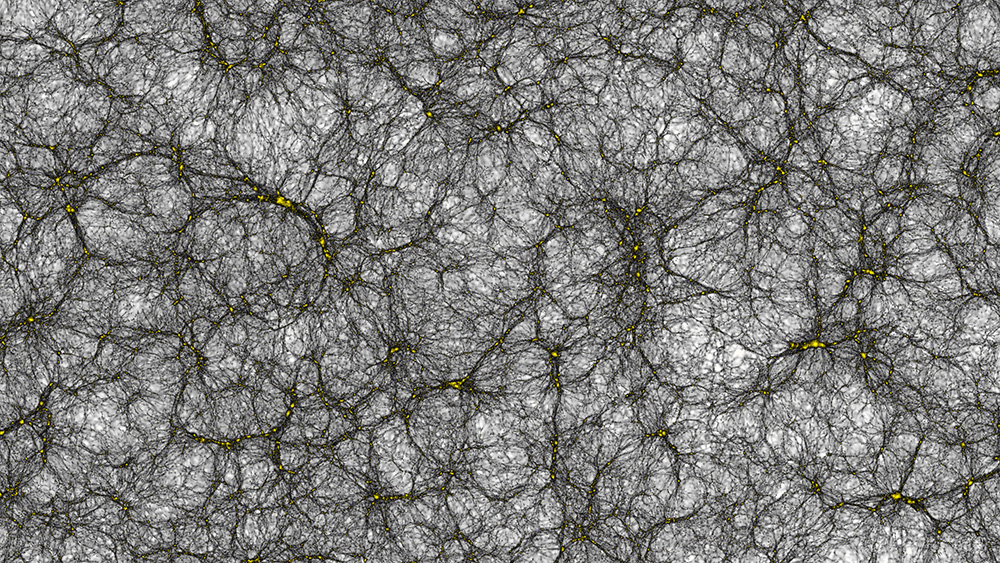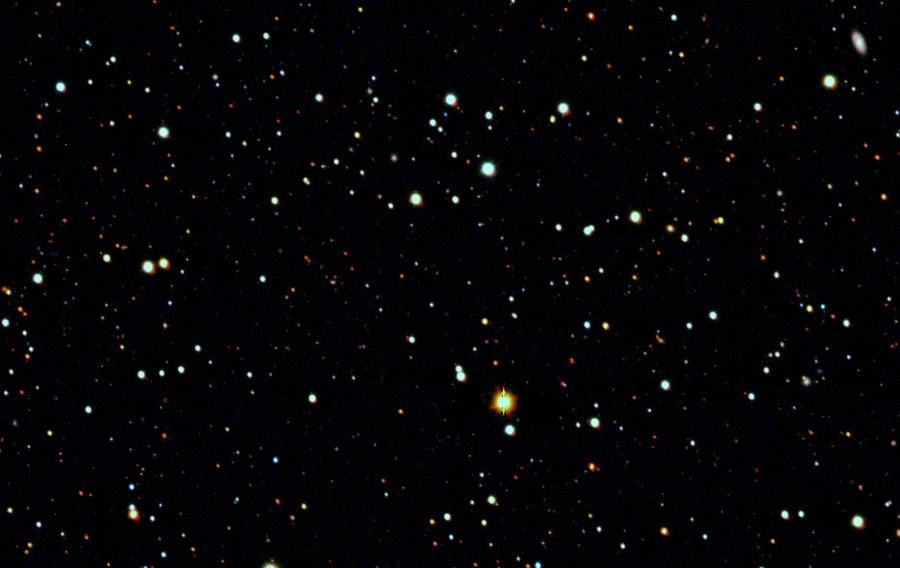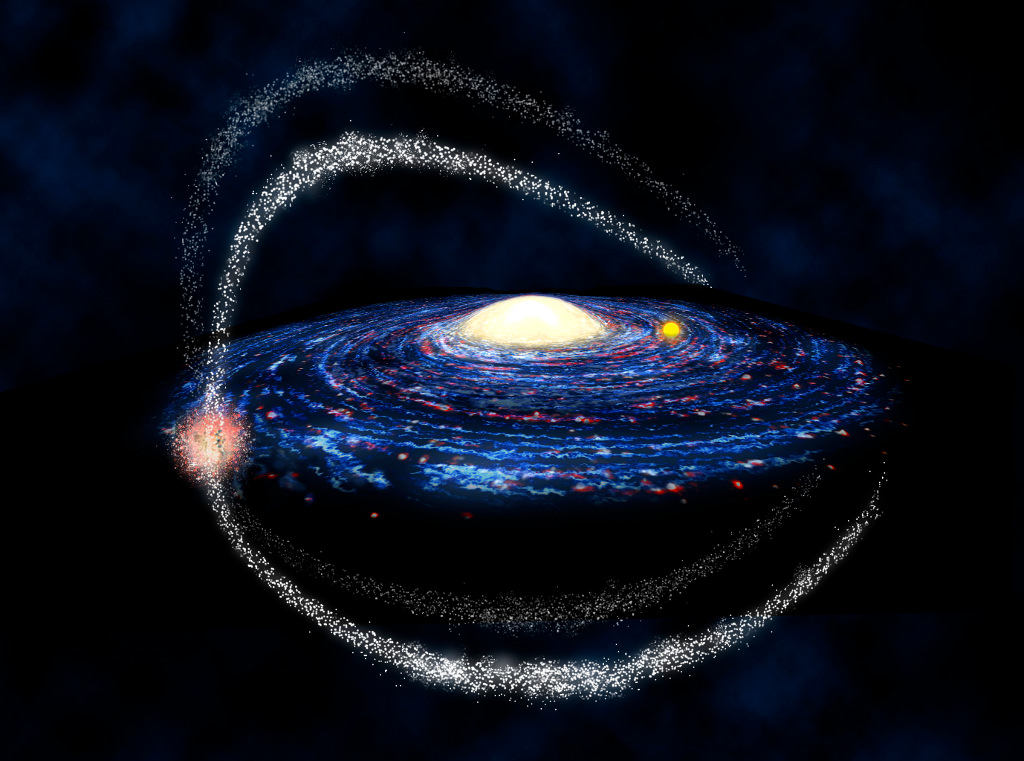Nearby Ancient Dwarf Galaxies Have a Surprising Amount of Dark Matter
By Matt Williams
Around the Milky Way, there are literally dozens of dwarf galaxies that continue to be slowly absorbed into our own. These galaxies are a major source of interest for astronomers because they can teach us a great deal about cosmic evolution, like how smaller galaxies merged over time to create larger structures. Since they are thought to be relics of the very first galaxies in the Universe, they are also akin to “galactic fossils.”
Recently, a team of astrophysicists from the Massachusetts Institute of Technology (MIT) observed one of the most ancient of these galaxies (Tucana II) and noticed something unexpected. At the edge of the galaxy, they observed stars in a configuration that suggest that Tucana II has an extended Dark Matter halo. These findings imply that the most ancient galaxies in the Universe had more Dark Matter than previously thought.
The research was led by physics grad student Anirudh Chiti of MIT’s Kavli Institute for Astrophysics and Space Research, and Anna Frebel – the Silverman Family Career Development Associate Professor of Physics at MIT. They were joined by multiple colleagues from Kavli, as well as the Observatories of the Carnegie Institution of Washington, ANU’s Research School of Astronomy and Astrophysics, and UC Berkeley.

To recap, Dark Matter refers to the invisible mass that astronomers began theorizing about during the 1960s. It accounts for 85% of the matter in the Universe and about one-quarter of its total mass-energy density. While all attempts to find a candidate particle for Dark Matter have not met with success (thus far), scientists are able to observe its influence on large-scale structures (like galaxies and galaxy clusters).
A perfect example of this is Dark Matter Halos, which refers to a local concentration of mass that permeates and surrounds galaxies, groups, and galaxy clusters and holds them together. The presence of these halos is determined by observing the rotation curves of galaxies and the motions of galaxies in groups and clusters, which astronomers noticed did not accord with the amount of matter they can see (aka. “luminous matter”).
Tucana II is an ultrafaint dwarf galaxy located about 163,000 light-years from Earth in the direction of the Tucana constellation. Based on the age of its stars (all old and very faint red stars) and it’s low metallicity, Tucana II is one of the most primitive dwarf galaxies known. Previously, astronomers had identified stars around its core with such low metal content that the galaxy was deemed the oldest of known ultrafaint dwarf galaxies.
For the sake of their study, Chiti, Frebel, and their team observed Tuscana II to see if this ancient galaxy might contain even older stars – the study of which could offer insight into the formation of the Universe’s first galaxies. It is estimated that these formed roughly 13 billion years ago, just 800 million years after the Big Bang. To test this, they obtained data from the SkyMapper Telescope, an optical ground-based telescope in Australia.

They then applied an imaging filter to spot particularly faint, metal-poor stars and paired their observations with an algorithm (developed by Chiti) to identify them. In addition to the previously-identified stars near the core, they observed nine new ones at the edge of Tucana II. They also noted that they were in a configuration that suggested they were caught up on the galaxy’s gravitational pull.
This was surprising given how far from the core they were and suggest that Tucana II has an extended dark matter halo that is three to five times more massive than previously thought. “Tucana II has a lot more mass than we thought, in order to bound these stars that are so far away,” said Chiti. “This means that other relic first galaxies probably have these kinds of extended halos too.”
Chiti and Frebel followed up on these results using data previously obtained by the Magellan Telescopes at the Las Campanas Observatory in Chile. These observations suggested that the nine new stars were even more metal-poor (older) than those at the core. These results are the first evidence that ultrafaint dwarf galaxies have extended halos and could have significant implications for cosmological theories. As Frebel explained:
“This probably also means that the earliest galaxies formed in much larger dark matter halos than previously thought. We have thought that the first galaxies were the tiniest, wimpiest galaxies. But they actually may have been several times larger than we thought, and not so tiny after all.”

What’s more, the imbalance between old stars near the core and even older stars in the outskirts could be an indication that Tucana II may have been the product of one of the first mergers in the Universe. This process of “galactic cannibalism” occurs constantly throughout the Universe today and will take place in about 3.75 billion years between the Milky Way and the neighboring Andromeda galaxy.
However, until now, it was unclear whether or not early galaxies merged in a similar way. In this respect, Frebel claims that what they observed could be another first:
“We may be seeing the first signature of galactic cannibalism. One galaxy may have eaten one of its slightly smaller, more primitive neighbors, that then spilled all its stars into the outskirts. Tucana II will eventually be eaten by the Milky Way, no mercy. And it turns out this ancient galaxy may have its own cannibalistic history. There are likely many more systems, perhaps all of them, that have these stars blinking in their outskirts.”
In the near future, the team plans to use this same approach to observe other ultrafaint dwarf galaxies around the Milky Way. If they happen to find many other instances of very old stars orbiting near the edges of dwarf galaxies, it will indicate that Dark Matter played a particularly important role in the merger of ancient galaxies and their subsequent evolution.
The study that describes their findings, “Chemical Abundances of New Member Stars in the Tucana II Dwarf Galaxy,” recently appeared in The Astrophysical Journal. The research was made possible thanks in part to support provided by NASA and the National Science Foundation (NSF).
Further Reading: MIT
The post Nearby Ancient Dwarf Galaxies Have a Surprising Amount of Dark Matter appeared first on Universe Today.

February 9, 2021 at 03:29AM
via Universe Today read more...

Post a Comment